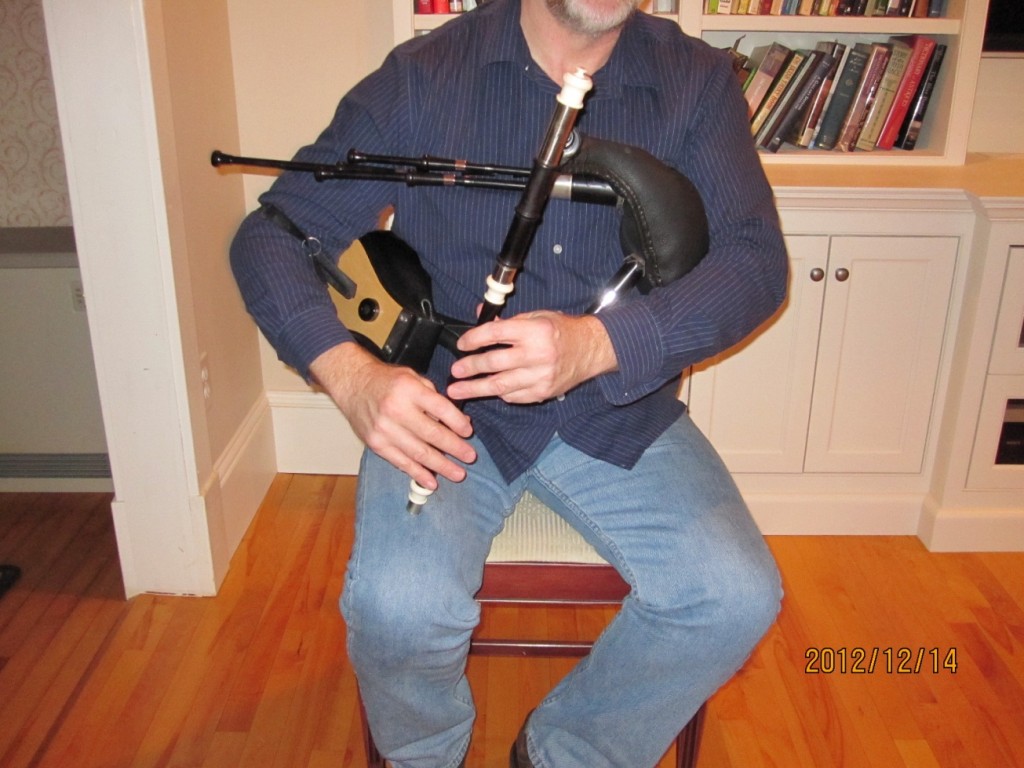This past September I had the pleasure of spending a few weeks holiday in Ireland. The main purpose of the visit was to participate in what was being advertised as a Bagpipe Making Holiday with master instrument maker Ray Sloan, who had set up his workshop at Inver Bay in the rugged beauty of County Donegal.
I have been playing a set of Ray Sloan Scottish smallpipes for almost 15 years now, and since I have been toying around with the idea of learning to play the Uillean pipes at some point in the future, I decided to spend a week with Ray and make an Irish pipe chanter, reed and adapter to use with my existing pipes and to learn more about reed making in general. I mentioned the idea to my good friend and fellow musician, John Dally, Vashon Island, Washington, and as it turned out he had been considering this venture for some time as well. After several email exchanges between the three of us, John and I found ourselves on a bus from Dublin to Donegal. After a four hour bus ride through the countryside we arrived in Donegal Town where we later met Ray and his charming wife, Belinda.
Donegal Town is a quaint little community and as luck would have it, Donegal had just won the Gaelic football Championship in Dublin (the first time in twenty years), so the town was awash in people, full pubs, and an overall air of excitement and jubilation. This was an unexpected diversion but I had come to learn about pipe making and I was anxious to get started.
The work part of the holiday started Monday morning with Belinda picking John and I up at the B&B, then a 20 minute ride to their house and workshop, where we spent most of the day. Belinda is an excellent cook and she provided delicious lunches all week and copious amounts of tea during the morning and afternoon breaks. Ray and Belinda were also kind enough to take us to several local evening sessions where we could sample some of the local music and refreshments and join in on a tune or two.
Ray’s workshop is a small stone structure close to the house. It contained several lathes, a drill press, a large work table, shelves of various types of wood, and artificial ivory, leather, reamers, cane, and several instruments in various stages of completion; everything one would expect in an instrument maker’s workplace. To make the best use of time, John started on reed making first and Ray introduced me to wood turning on a metal lathe. I had very little experience with lathes before this and within an hour I was turning down my first piece of African Black wood for a chanter.
Ray is an excellent teacher and does a great job of explaining the subtle intricacies of wood turning and reed making. As a teacher he prefers to let the student do almost all of the work, under his watchful eye. Most of the work to make a chanter is done using the more precise metal lathe, but there is still a certain amount of traditional turning with hand held tools and reamers. The whole process took a little more than three days with the remainder of the week devoted to reed making for both chanter and drones. At the end of five days, both John and I had made an Irish pipe chanter each and several reeds for both Uillean pipe chanters and Scottish smallpipes.
The daytime classes were not only productive, but also a lot of fun. The learning process was often interspersed with spontaneous story-telling, jokes, friendly banter and the occasional reference to one or two piping personalities. The entire week exceeded my expectations and I would like to return next year to increase my knowledge of wood turning, perhaps tackling a set of drones, or a C chanter.
The idea of making your own bagpipe and reeds is a relatively new concept for modern pipers. It has its roots in the traditional art of wood turning and musical instrument making of the early 19thcentury. A bagpipe making holiday represents a new direction for an old profession: a form of craft tourism where people can learn basic skills and craft their own musical instrument while living in another part of the world and experiencing a different culture.
It was said of the famous 19th century Scottish piper, John Ban Mackenzie, that he not only killed the sheep and stitched the bag, but he also turned the drones, chanter and blow-pipe on a lathe, made the reeds, and even composed and played some of the tunes on them. While animal husbandry is not in my future, I do plan to perfect my reed making skills through practice and use what I learned about lathes to perform some basic wood turning. The pipe making holiday was not only relaxing for me but it has helped me develop a greater appreciation for pipe makers and the time, skill and effort which goes into making the instruments we play.
Barry W. Shears, a native of Glace Bay, Cape Breton, Nova Scotia, is a piper, instructor, historian and author of a number of books, most recently “Dance to the Piper. The Highland Bagpipe in Nova Scotia” (2008 Cape Breton University Press).



